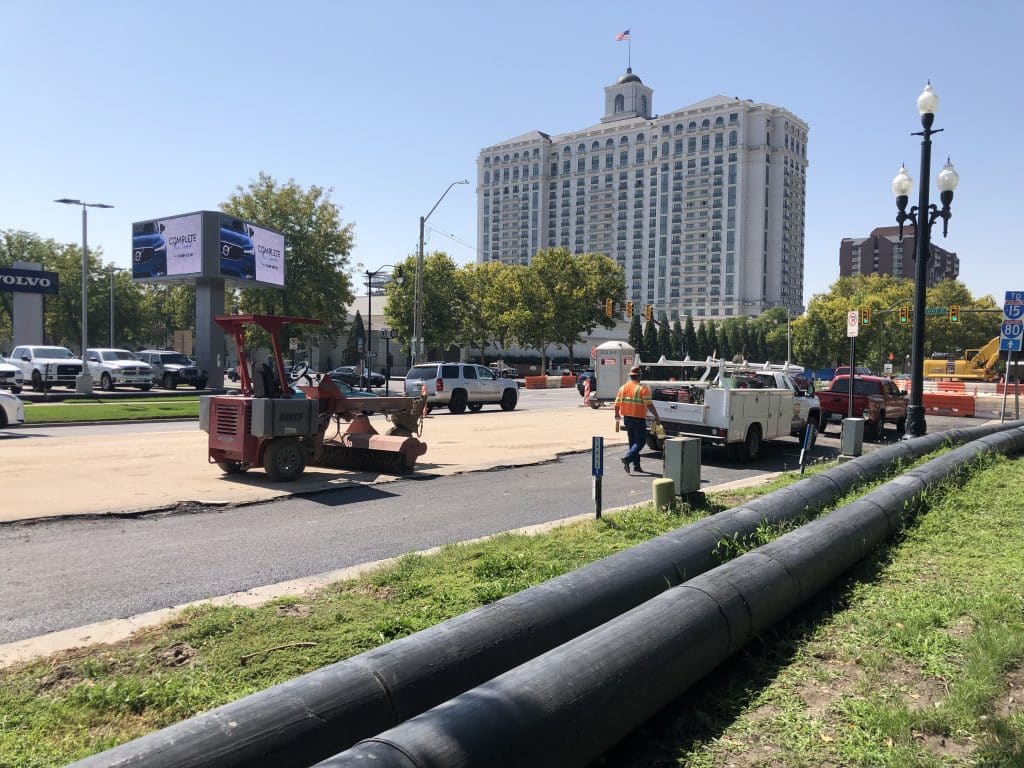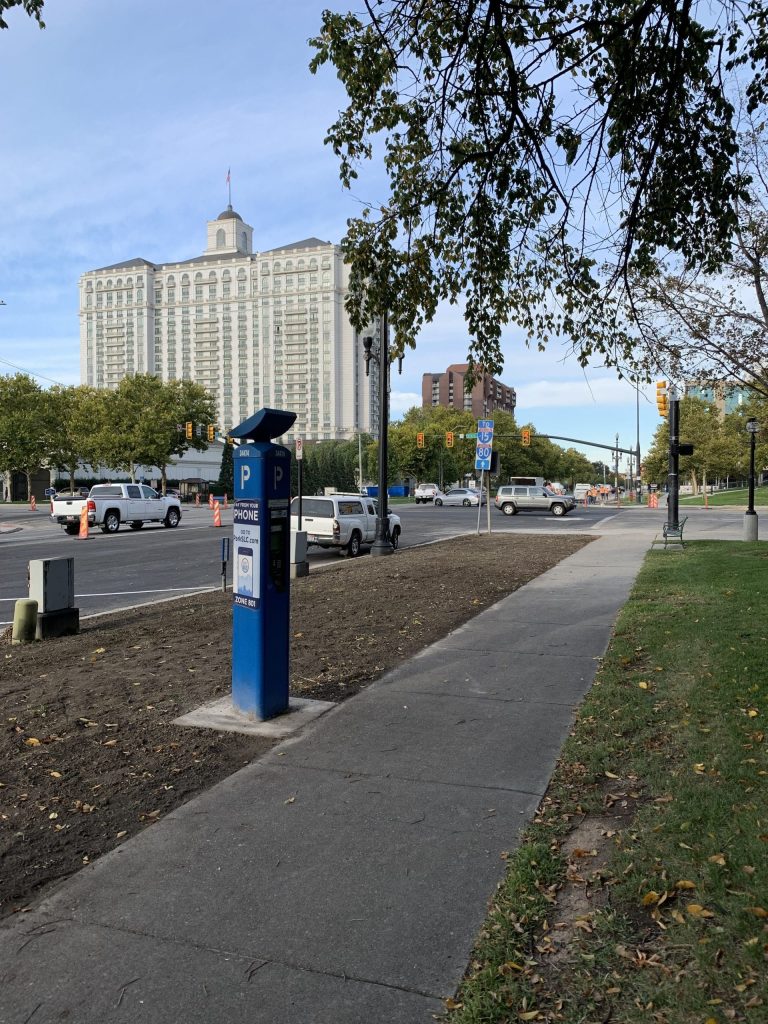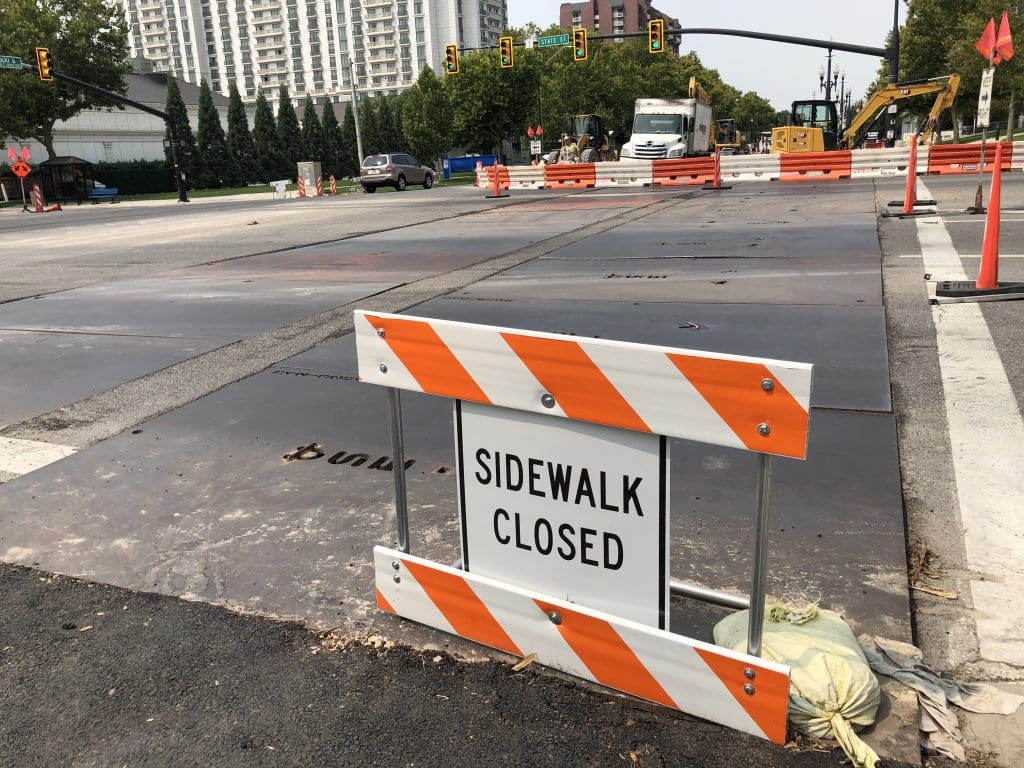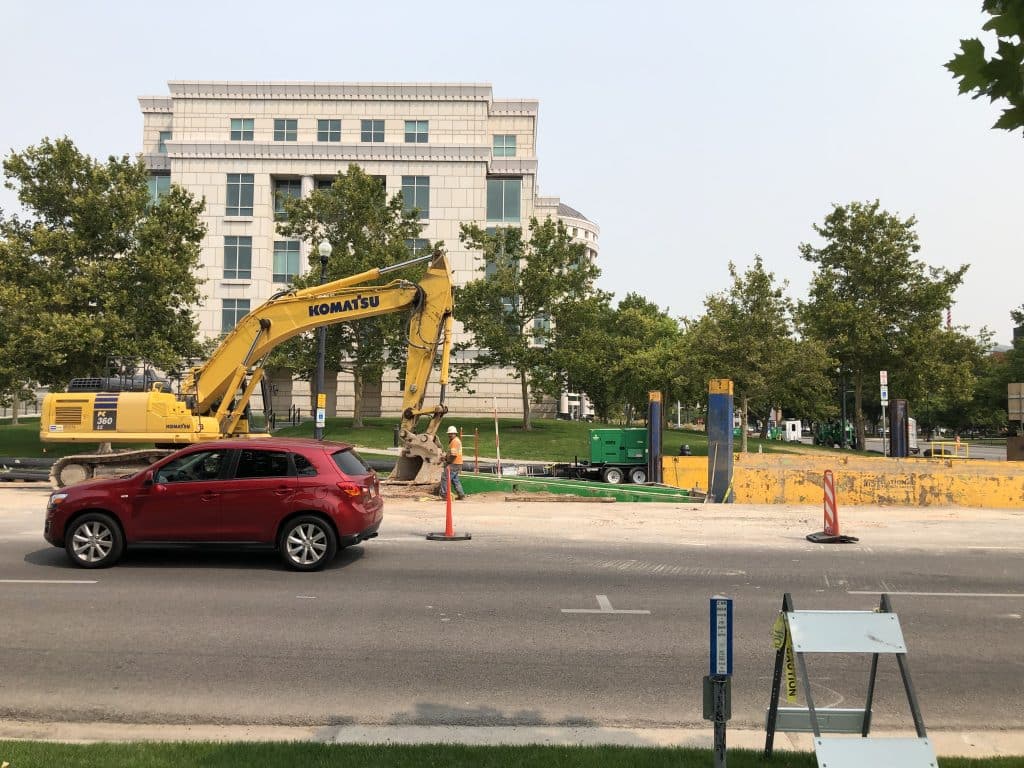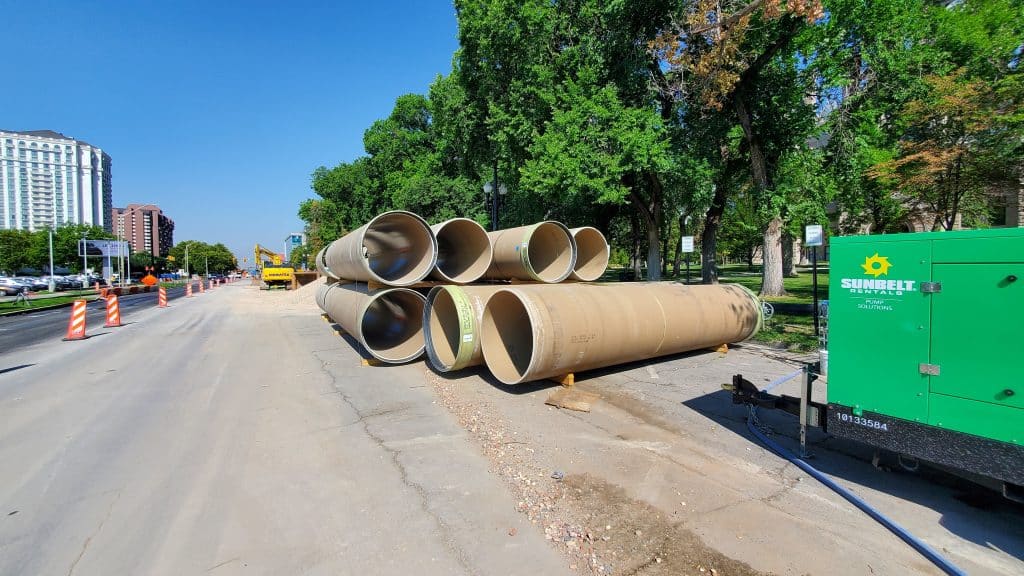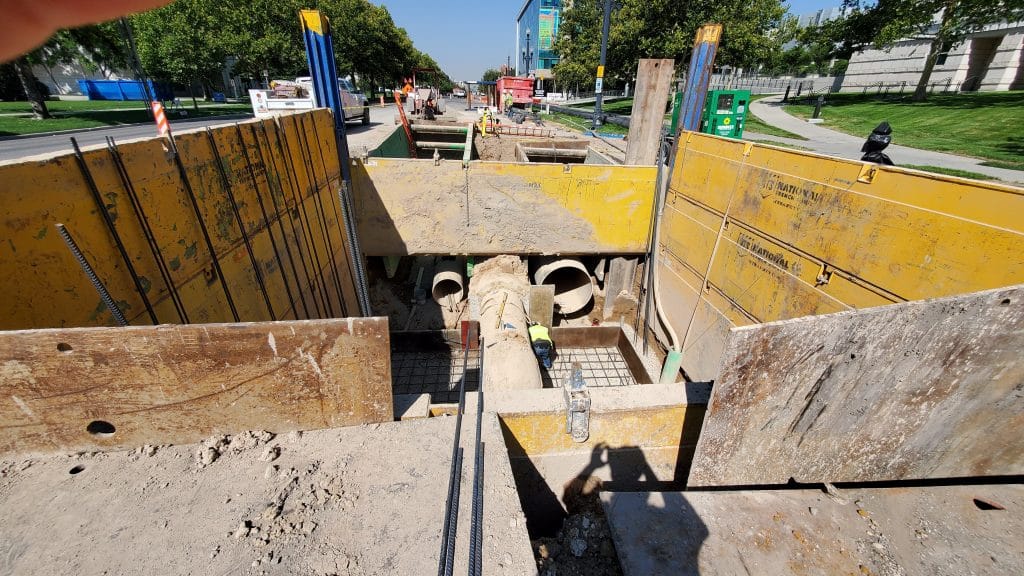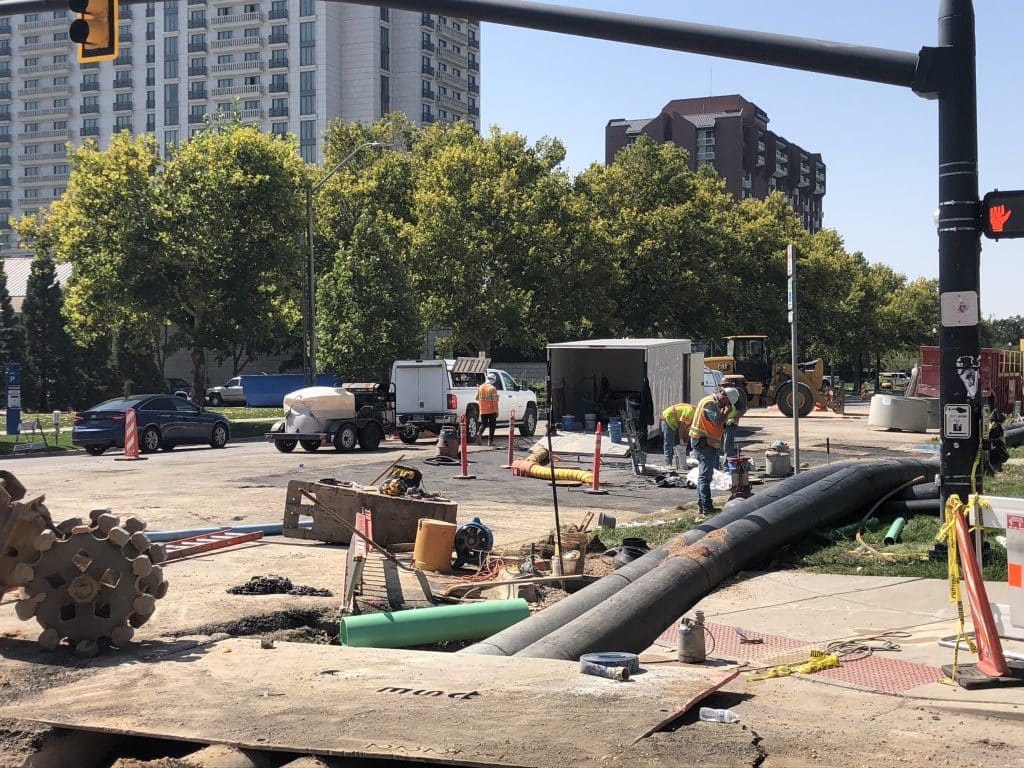
500 South Diversion Structure Improvements
The Salt Lake City Department of Public Utilities struggled for decades to understand the flow control elements at the existing diversion structure at the State Street and 500 South intersection, which included a reverse flow scenario. This project aimed to manage and address access and flow control issues for this sewer section by replacing the diversion structure and associated pipeline.
Our team investigated the elements and elevations that controlled the flow through the structure and identified the multiple pipelines that converge at this intersection. Because there was no access to the structure from the surface, all investigations had to be completed through either CCTV inspections or SUE. Our team developed multiple flow scenarios from viable alignment options. The new diversion structure was designed with two inlets, two outlets, an outlet stub for future expansion, and associated fiberglass-reinforced pipelines. The two active outflow lines balance the flow of two crucial trunklines. Our team developed detailed plans for the non-linear CIPP installation, bypass pumping, odor control, traffic management, and project phasing.
Our public involvement team collaborated early on with event organizers to minimize construction disruptions during major events. We engaged with key stakeholders in downtown Salt Lake City by providing regular updates on traffic, work progress, and project timeline changes. To address community concerns, efforts were made to reduce noise and odor without extending the project duration. We also coordinated with the Utah Transit Authority on affected bus routes and stops near the construction site, which involved road and lane closures. Despite its complexity, the project was completed within the allocated budget and ahead of schedule. Estimates project that the installed improvements saved the City approximately $15M in future capital improvements and reductions in groundwater infiltration.
Project Highlights
- Design and construction management
- Construction communications
- Public involvement
